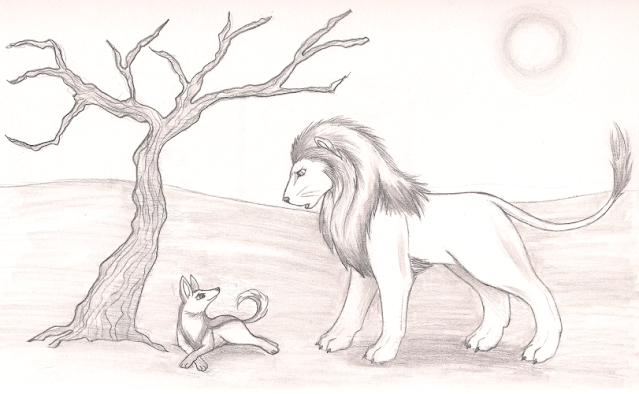The real Hound of the Baskervilles
The Hound of the Baskervilles is one of the most popular
stories about the detective Sherlock Holmes, focusing on Holmes’ investigation
into a phantom dog that has been terrorizing a family. What is relatively
unknown however is the origins of the story which is as popular as the story
itself
Arthur Conan Doyle, the creator of Sherlock Holmes had tried
to kill the character off in ‘The Final Problem’ but the public was not pleased
with this outcome and protested. Doyle at the pleas of many fans of the stories
finally revealed Holmes had survived in ‘The Empty House’. Doyle took a holiday
one day in Norfolk and visited an old friend, Bertram Fletcher Robinson and the both of them later travelled to Dartmoor.
While there, Doyle learnt a series of elements that would result in him
creating a new story for his famous Detective, even though he did not
originally envision the story as being a Holmes tale. From Robinson, he learnt
of a phantom dog as big as a young cow, with fiery red eyes that was said to
haunt the Norfolk countryside as well as the lands of the Moor, another name
for Dartmoor. This dog went by many names such as ‘black shuck’ or the ‘yeth
hound’, said to be a manifestation of the Devil or even a pet of the Devil
himself
Tales of such a
ghostly dog were not the only supernatural canine element that sparked Doyle’s
interest. He also learnt of a 17th-Century squire called Cabell who
in 1677 believed his wife, Elizabeth Fowell was having a love affair with
another man and attacked her, forcing her to flee across the moor with her
faithful hound. Cabell gave chase and eventually killed her. Still by his
mistress' side, the hound could only do one thing for his deceased mistress,
avenge her and so the hound and Cabell engaged in a deadly battle. Although the
Dog was successful in ripping out the squire’s throat, the squire himself
fatally stabbed the dog to death before he died. The dog’s spirit was said to
haunt each new generation of the family. It was said that following Cabell’s
death, a pack of black hounds were seen around his grave, howling over the
Moor. In an attempt to lay
his soul to rest, the villagers of the area, built a large building around the
tomb, and to be doubly sure a huge slab was placed
The death of
Capbell’s wife as well as the confrontation between him and her dog inspired
one of the first chapters in Doyle’s story where one of the first generations
of Baskervilles, Hugo Baskerville infatuated with a farmer’s daughter pursues her
over the Moor while swearing his soul to the Devil (Something that Squire
Cabell also did) should he capture her. By the time Hugo’s friends reach him,
they find both him and the girl dead with a sinister black hound standing over
both their bodies. Such a beast later haunts the current generation of
Baskervilles until the animal’s real identity is found out in the end
Doyle found the
name Baskerville in a coachman, one Harry Baskerville who was a guide for both
Doyle and Robinson. He also knew a Baskerville family living on the Welsh
border some four years ago in 1897. This family had intermarried with a
neighbouring family, the Vaughan Family, who owned a large black Labrador. This
enthused Doyle to create not an intermarried family for his Baskerville family
in his story but rather a rival family, the Stapleton Family who in the end are
revealed to be the owners of the dog haunting the Baskerville family and who
they have trained to be savage, devilish and ghostly. The Stapleton family are
also revealed to be indirectly related to the Baskerville family while having a
rivalry against them.
The English countryside where the story is set is beautiful
and exotic in its backdrop and surroundings. Although the lands of Dartmoor in
Southern England are haunting and mysterious; with an often foggy and misty
atmosphere and rolling hills dampened with bogs and thick marshes it is easy to
conjure up images of the supernatural. In fact this land is often referred to
as the ‘Devil’s Playground’.
It is believed that Baskerville Hall is based on one of
three possible houses on or near Dartmoor, namely Fowelscombe in the
parish of Ugborough, the seat of the Fowell
Baronets; Hayford Hall, near Buckfastleigh (also
owned by John King of Fowelscombe) and Brook Hall, in the parish of Buckfastleigh, about
two miles east of Hayford, the actual home of Richard Cabell. It has also been
claimed that Baskerville Hall is based on a property in Mid Wales, built in
1839 by one Thomas Mynors Baskerville, one of the relatives of the Baskerville
family who Doyle knew as a family friend while he stayed there. The house was
formerly named Clyro Court and was renamed Baskerville Hall towards the end of
the last century.
Although The Hound of the Baskervilles is set before the events of 'The Final Problem' and is Doyle's first Holmes story in nine years, Doyle would bring back the character for good in 'The Empty House'
The Hound of the Baskervilles was published in 1902 to critical acclaim and is regarded to be the best of all Sherlock Holmes stories
Although The Hound of the Baskervilles is set before the events of 'The Final Problem' and is Doyle's first Holmes story in nine years, Doyle would bring back the character for good in 'The Empty House'
The Hound of the Baskervilles was published in 1902 to critical acclaim and is regarded to be the best of all Sherlock Holmes stories




Comments
Post a Comment